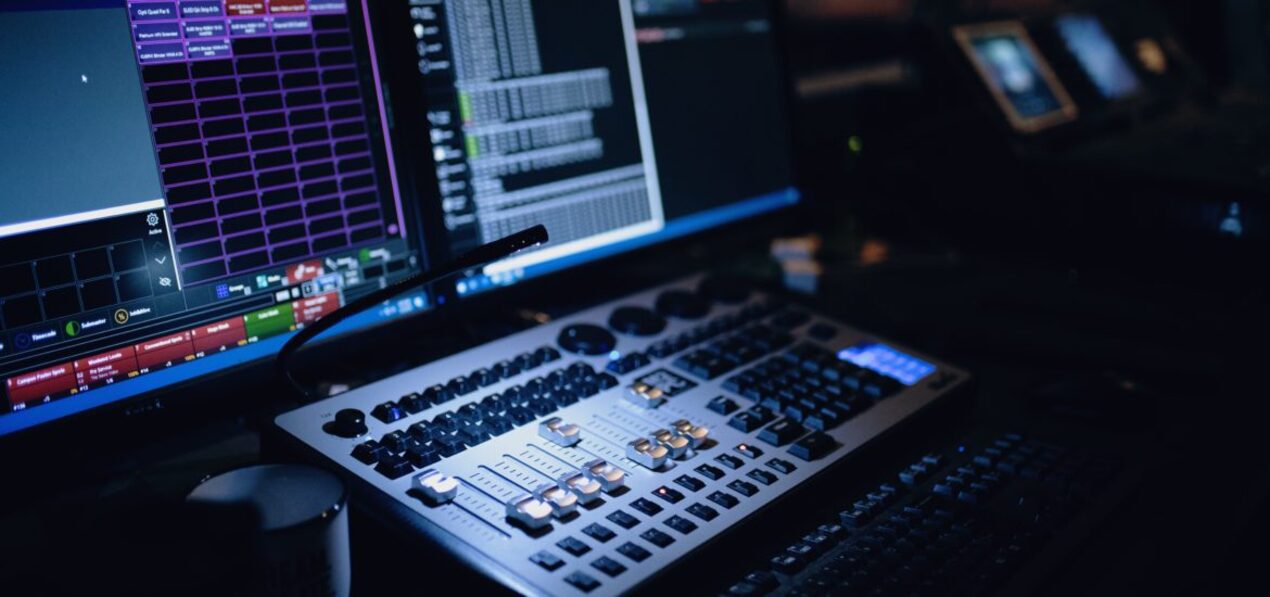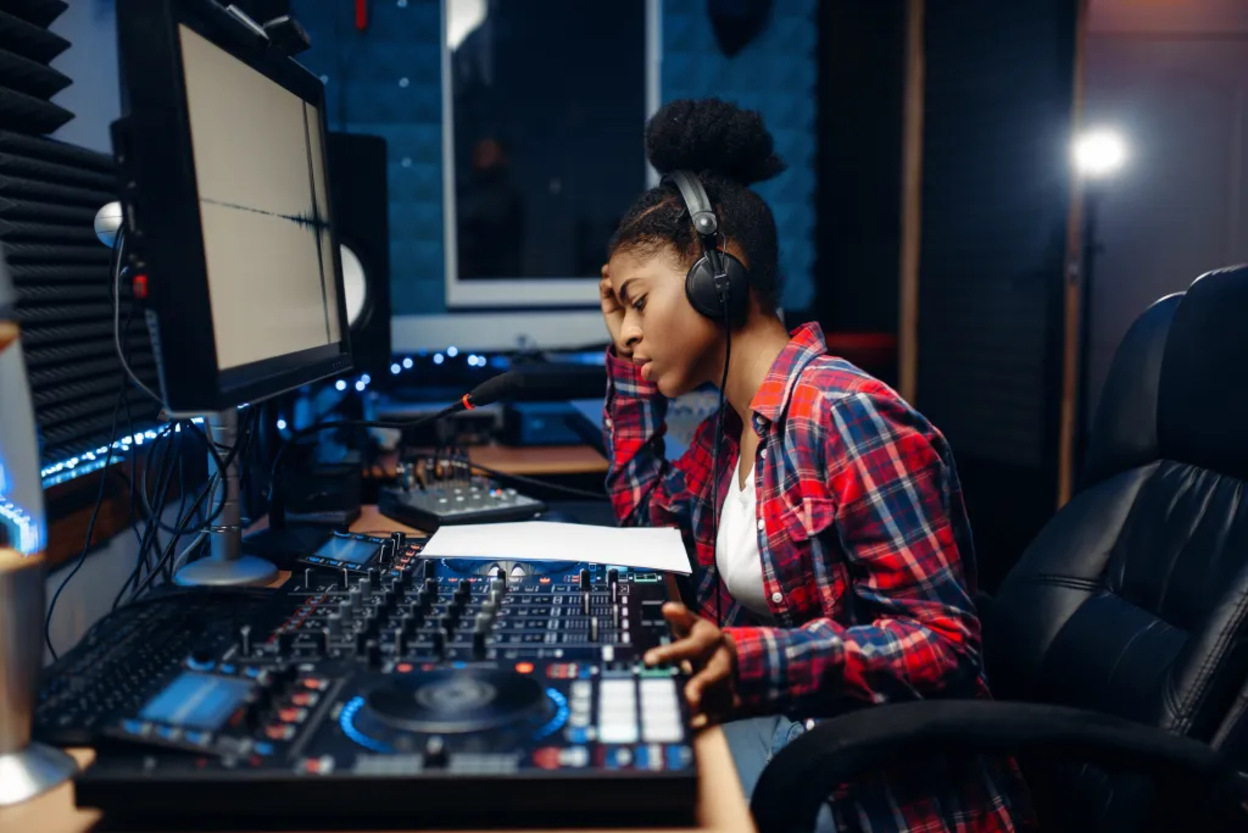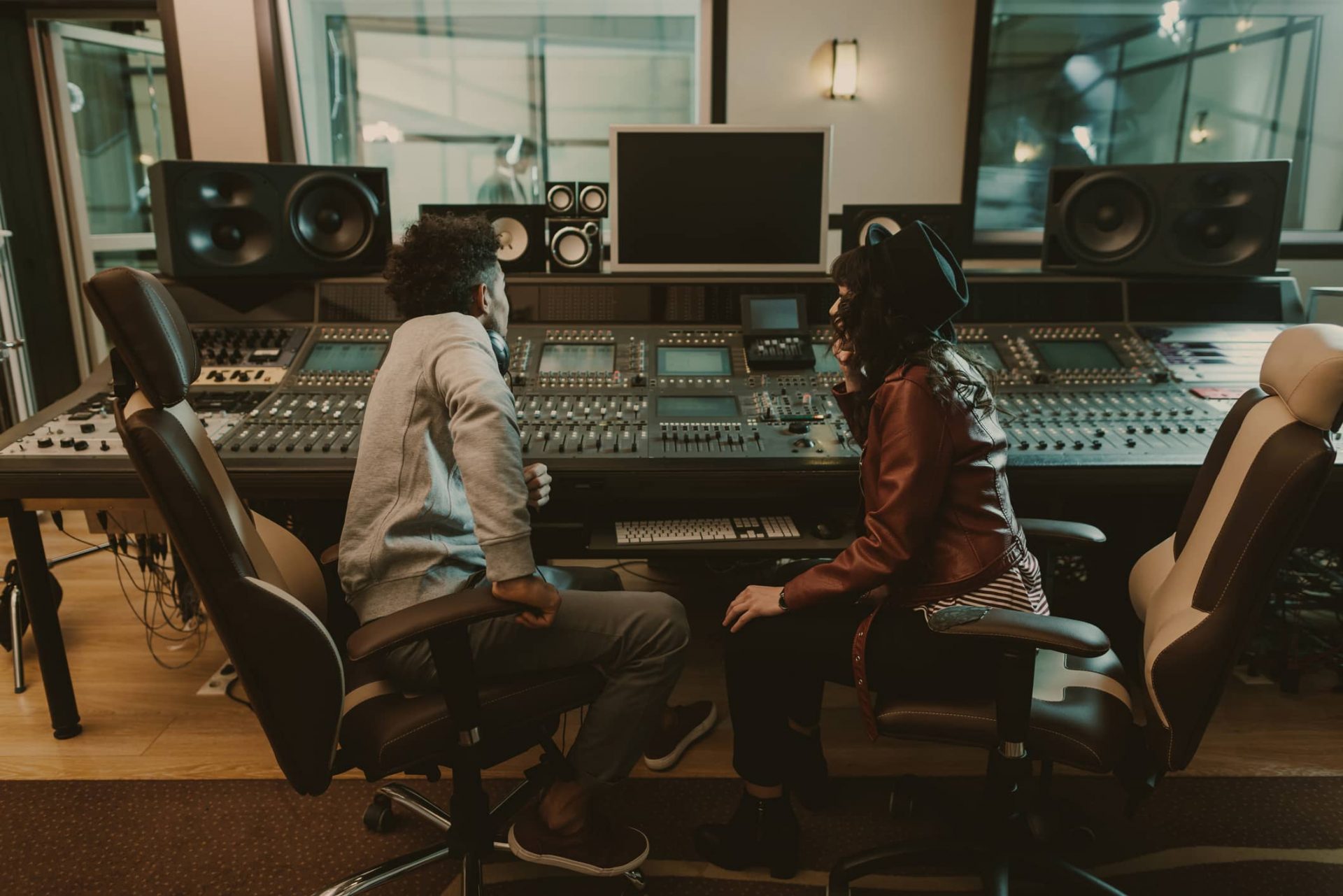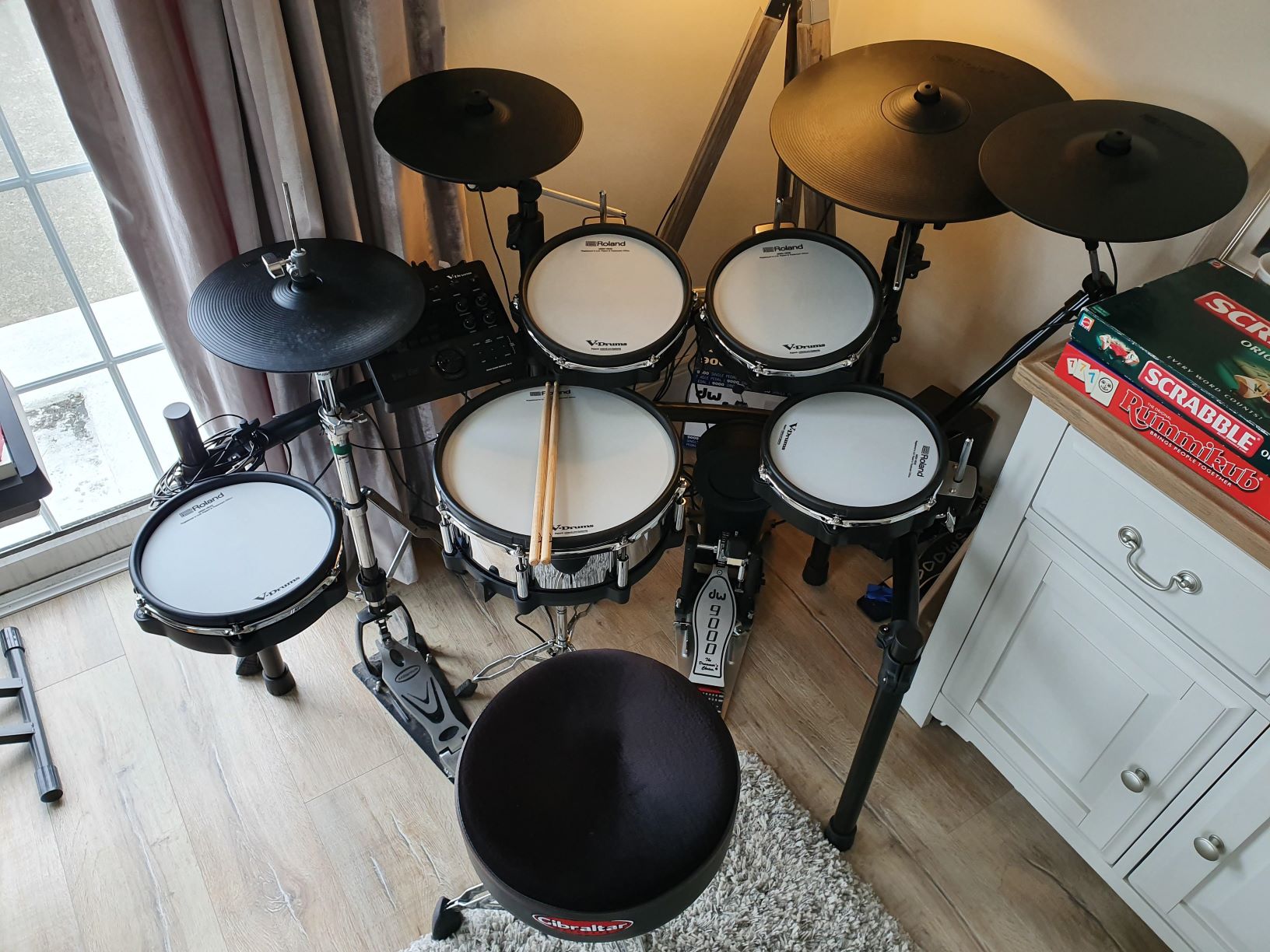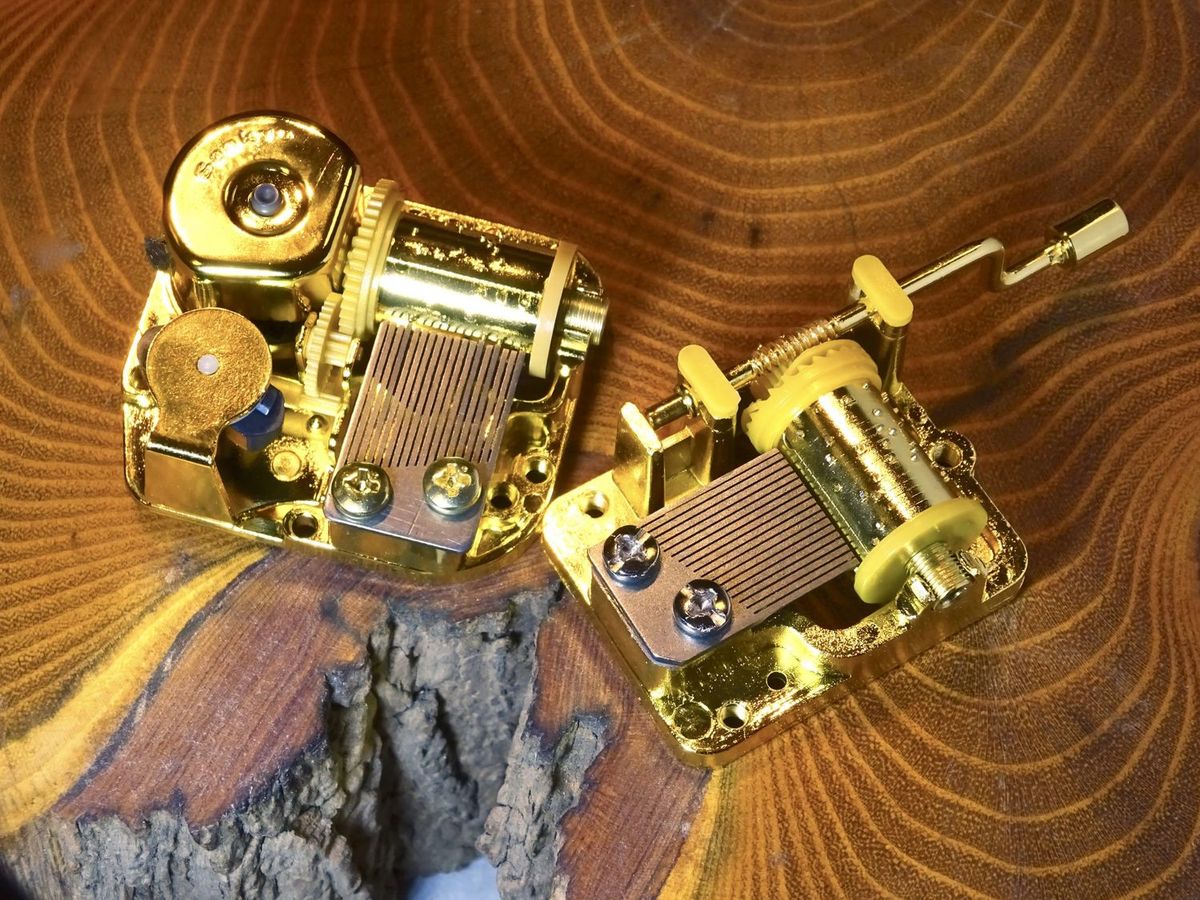Home>Production & Technology>Producer>How To Become An Electronic Music Producer


Producer
How To Become An Electronic Music Producer
Published: March 5, 2024
Learn the essential steps to become an electronic music producer, from mastering production software to promoting your music. Explore the key skills and strategies needed to succeed in the industry. Start your journey to becoming a successful producer today!
(Many of the links in this article redirect to a specific reviewed product. Your purchase of these products through affiliate links helps to generate commission for AudioLover.com, at no extra cost. Learn more)
Table of Contents
- Introduction
- Getting Started in Electronic Music Production
- Learning the Basics of Music Theory
- Understanding Digital Audio Workstations (DAWs)
- Exploring Different Electronic Music Genres
- Developing Your Sound and Style
- Building a Home Studio Setup
- Collaborating with Other Artists
- Marketing Yourself as a Music Producer
- Conclusion
Introduction
Embarking on the journey to become an electronic music producer is an exhilarating and creative endeavor that allows individuals to express their musical passion and innovation. In today's digital age, the realm of electronic music production offers a dynamic platform for aspiring producers to craft compelling soundscapes and connect with audiences worldwide. Whether you are drawn to the pulsating beats of techno, the ethereal melodies of ambient music, or the infectious rhythms of house music, the world of electronic music production is a boundless playground for sonic exploration.
As an electronic music producer, you have the opportunity to sculpt sonic landscapes that transcend traditional musical boundaries, harnessing the power of technology and innovation to create immersive auditory experiences. With the rise of streaming platforms and digital distribution channels, aspiring producers can now share their music with a global audience, transcending geographical limitations and reaching listeners across continents.
In this comprehensive guide, we will delve into the multifaceted realm of electronic music production, equipping you with the knowledge and insights to kickstart your journey as a music producer. From mastering the fundamentals of music theory to navigating the intricacies of digital audio workstations (DAWs), we will explore the essential skills and tools that form the foundation of electronic music production. Additionally, we will delve into the diverse genres within the electronic music landscape, providing a glimpse into the sonic tapestry that awaits exploration.
Moreover, we will delve into the process of honing your unique sound and style, guiding you through the creative evolution that distinguishes a producer's sonic identity. Furthermore, we will discuss the pivotal role of building a home studio setup, offering practical advice on assembling the essential gear and creating an inspiring workspace for your musical endeavors.
As you immerse yourself in the world of electronic music production, collaboration with fellow artists becomes a catalyst for growth and creativity. We will explore the art of collaboration and the profound impact it can have on your musical journey, fostering new perspectives and pushing the boundaries of your creative expression.
Finally, we will unravel the strategies for effectively marketing yourself as a music producer, navigating the digital landscape to showcase your artistry and connect with a global audience. By understanding the intricacies of promotion and branding, you can elevate your presence in the competitive realm of electronic music production.
Join us as we embark on this enriching odyssey through the realm of electronic music production, unveiling the tools, techniques, and creative insights that will empower you to carve your path as a visionary music producer.
Getting Started in Electronic Music Production
Embarking on the journey of electronic music production is an exciting venture that beckons individuals to explore the boundless realm of sonic creativity. As you set foot into this captivating domain, it is essential to lay a strong foundation that will serve as the springboard for your musical odyssey.
To kickstart your foray into electronic music production, immerse yourself in the captivating world of electronic music. Listen to a diverse array of electronic music genres, ranging from the hypnotic rhythms of techno to the ethereal textures of ambient music. By delving into the sonic tapestry of electronic music, you will glean invaluable insights and inspiration that will fuel your creative endeavors.
Furthermore, familiarize yourself with the essential tools and technologies that form the backbone of electronic music production. Acquaint yourself with digital audio workstations (DAWs), which are the central hub for crafting and arranging electronic compositions. Explore the myriad of plugins, synthesizers, and audio effects that empower producers to sculpt and manipulate sounds with precision and artistry.
As you delve into the world of electronic music production, embrace a mindset of continuous learning and experimentation. Seek out online tutorials, courses, and resources that offer comprehensive insights into music production techniques, sound design, and mixing/mastering processes. Additionally, immerse yourself in the vibrant community of electronic music producers, engaging in forums, workshops, and collaborative projects to expand your knowledge and network with fellow creators.
Moreover, cultivate a deep appreciation for music theory, as it forms the bedrock of compositional prowess and artistic expression. Understanding fundamental concepts such as harmony, rhythm, and melody will empower you to craft compelling musical narratives and imbue your productions with depth and emotion.
In essence, getting started in electronic music production entails a harmonious blend of passion, curiosity, and dedication. By immersing yourself in the sonic landscapes of electronic music, embracing technological innovation, and nurturing a thirst for knowledge, you will lay a robust foundation for your journey as an electronic music producer. This initial phase serves as the gateway to a world brimming with creative possibilities, where your musical visions can flourish and resonate with audiences across the globe.
Learning the Basics of Music Theory
Understanding the fundamental principles of music theory is akin to acquiring a painter's knowledge of color theory – it lays the groundwork for artistic expression and compositional finesse. As an aspiring electronic music producer, delving into the realm of music theory unveils a treasure trove of insights that enrich your creative palette and elevate your sonic compositions.
At the heart of music theory lies the intricate interplay of melody, harmony, rhythm, and form. By immersing yourself in these foundational elements, you gain a deeper comprehension of musical structures and the nuanced artistry that underpins captivating compositions. Embracing melody as a focal point, you unravel the significance of melodic motifs, intervals, and phrasing, which serve as the emotive conduits through which musical narratives unfold.
Moreover, delving into the realm of harmony unveils the enchanting world of chord progressions, voicings, and tonal relationships. Understanding the harmonic fabric of music empowers you to craft rich and evocative sonic tapestries, infusing your productions with depth and emotive resonance. Additionally, rhythmic prowess forms a cornerstone of music theory, as it encompasses the pulsating heartbeat of compositions, dictating the ebb and flow of sonic energy with precision and allure.
As you navigate the labyrinth of music theory, acquaint yourself with essential concepts such as scales, modes, and cadences, which serve as the building blocks of musical expression. By mastering these foundational elements, you gain the fluency to articulate your creative vision with clarity and finesse, transcending technical constraints to imbue your compositions with a profound sense of artistry.
In essence, learning the basics of music theory equips you with a holistic understanding of the language of music, enabling you to communicate your artistic vision with eloquence and depth. This foundational knowledge serves as a compass that guides your creative explorations, empowering you to craft compositions that resonate with emotive potency and enduring allure. Embrace the realm of music theory as a gateway to boundless creative horizons, where your sonic visions can unfurl with grace and ingenuity.
Understanding Digital Audio Workstations (DAWs)
Digital Audio Workstations, commonly referred to as DAWs, serve as the veritable command centers for electronic music producers, providing a comprehensive suite of tools and functionalities to compose, arrange, and mix musical creations with unparalleled precision and creativity. At the core of a DAW lies a sophisticated ecosystem of audio recording, editing, and processing capabilities, seamlessly integrated within an intuitive interface that empowers producers to sculpt sonic landscapes with finesse and artistry.
One of the pivotal features of DAWs is their multifaceted approach to music production, offering a diverse array of virtual instruments, synthesizers, and sample libraries that expand the sonic palette of producers. Whether it's the evocative timbres of virtual pianos, the pulsating rhythms of electronic drum kits, or the ethereal textures of synthesizer patches, DAWs provide a rich tapestry of sounds that catalyze the creative process and inspire innovative musical expressions.
Furthermore, the robust audio editing tools within DAWs enable producers to manipulate and refine sound recordings with surgical precision, from seamless comping of vocal takes to intricate time-stretching and pitch-shifting techniques. This level of meticulous control empowers producers to breathe life into their musical visions, sculpting sounds with nuance and detail to evoke emotive resonance and captivate listeners.
Moreover, the mixing and mastering capabilities of DAWs serve as the final crucible where sonic elements are woven together into a cohesive tapestry of sound. With a myriad of audio effects, dynamic processors, and spatial enhancements at their disposal, producers can imbue their compositions with depth, clarity, and spatial dimension, ensuring that every sonic nuance is meticulously crafted to perfection.
In essence, understanding digital audio workstations is akin to wielding a painter's palette, where each brushstroke of sound is meticulously crafted and arranged to compose a vivid musical canvas. As an aspiring electronic music producer, harnessing the power of DAWs empowers you to unleash your creative prowess, sculpting sonic realms that transcend conventional boundaries and resonate with captivating allure. Embrace the boundless potential of digital audio workstations as your creative ally, and embark on a transformative journey of musical innovation and sonic storytelling.
Exploring Different Electronic Music Genres
The electronic music landscape is a kaleidoscope of sonic diversity, encompassing a myriad of genres that captivate audiences with their distinctive rhythms, textures, and atmospheres. As an aspiring electronic music producer, delving into the rich tapestry of electronic music genres unveils a captivating odyssey of sonic exploration and creative inspiration.
Techno
Originating in the underground clubs of Detroit, techno embodies the hypnotic allure of pulsating rhythms and futuristic soundscapes. Characterized by its driving beats, ethereal synth pads, and enigmatic atmospheres, techno transcends traditional musical structures, immersing listeners in a transcendent auditory journey.
House
With its roots in the vibrant club culture of Chicago, house music exudes infectious grooves, soulful melodies, and uplifting energy. From the soulful strains of deep house to the vibrant rhythms of vocal house, this genre embodies the spirit of celebration and communal unity, inviting listeners to lose themselves in its infectious rhythms.
Ambient
Embracing the ethereal realms of sonic tranquility, ambient music beckons listeners into a world of serenity and introspection. Defined by its expansive soundscapes, delicate textures, and meditative qualities, ambient music serves as a sonic sanctuary, enveloping listeners in a cocoon of tranquility and contemplation.
Drum and Bass
Emanating from the underground rave culture of the UK, drum and bass pulsates with frenetic energy, intricate breakbeats, and thunderous basslines. This genre embodies the adrenaline-fueled spirit of electronic music, propelling listeners into a kinetic dancefloor frenzy with its rapid-fire rhythms and immersive sonic tapestries.
Trance
With its euphoric melodies, cascading arpeggios, and entrancing build-ups, trance music transcends conventional boundaries, enveloping listeners in a euphoric embrace of sonic transcendence. Evoking a sense of emotional upliftment and euphoria, trance music serves as a catalyst for profound introspection and ecstatic dancefloor experiences.
Dubstep
Defined by its seismic bass drops, intricate rhythmic patterns, and aggressive sound design, dubstep commands attention with its visceral impact and sonic intensity. Originating from the underground electronic music scene in the UK, dubstep has evolved into a global phenomenon, captivating audiences with its bold sonic innovations and genre-defying allure.
Synthwave
Drawing inspiration from the nostalgic aesthetics of 80s pop culture, synthwave channels retro-futuristic vibes, neon-drenched atmospheres, and pulsating synthwave soundscapes. With its evocative nostalgia and cinematic allure, synthwave transports listeners to a realm of cybernetic nostalgia, celebrating the timeless allure of analog synthesizers and retro-futurism.
Future Bass
Fusing elements of trap, hip-hop, and electronic dance music, future bass captivates audiences with its lush chord progressions, emotive melodies, and innovative sound design. This genre embodies a fusion of emotive resonance and kinetic energy, crafting a sonic landscape that resonates with both introspective contemplation and euphoric dancefloor fervor.
In essence, exploring the diverse electronic music genres unveils a kaleidoscope of sonic innovation and creative expression, inviting aspiring producers to immerse themselves in a rich tapestry of musical diversity. Each genre encapsulates a unique sonic narrative, inviting producers to embark on an odyssey of sonic exploration, where creativity knows no bounds, and innovation thrives in the boundless realm of electronic music.
Developing Your Sound and Style
As an aspiring electronic music producer, the journey of developing your sound and style unfolds as a deeply personal and artistic odyssey. It is a quest that transcends technical proficiency, delving into the realm of creative introspection and sonic innovation. At the heart of this transformative journey lies the pursuit of a distinct sonic identity – a musical fingerprint that resonates with emotive potency and captivates listeners with its singular allure.
Developing your sound and style begins with a process of introspective exploration, where you delve into the depths of your musical influences, aspirations, and creative inclinations. Embrace the sonic tapestries that have left an indelible imprint on your artistic sensibilities, from the pioneering works of electronic music visionaries to the evocative landscapes of cinematic soundtracks. By immersing yourself in this sonic mosaic, you glean insights that crystallize into the building blocks of your artistic expression.
Moreover, the process of developing your sound and style entails a harmonious fusion of technical prowess and artistic intuition. It beckons you to sculpt sonic textures that transcend conventional boundaries, infusing your compositions with a sense of emotive resonance and narrative depth. Whether it's the ethereal allure of ambient textures, the pulsating energy of rhythmic motifs, or the evocative melodies that linger in the heart, your sonic identity emerges as a tapestry of emotive narratives and sonic innovation.
Furthermore, embrace the art of sonic experimentation and innovation as a catalyst for shaping your distinct musical identity. Explore unconventional sound design techniques, harness the evocative potential of field recordings, and push the boundaries of sonic manipulation to carve a sonic landscape that embodies your artistic vision. By embracing the ethos of sonic exploration, you unearth a reservoir of creative ingenuity that propels your sound and style into uncharted territories of sonic innovation.
In essence, the process of developing your sound and style is a transformative odyssey that transcends technical proficiency, inviting you to weave a sonic narrative that resonates with emotive depth and artistic allure. Embrace the boundless horizons of sonic exploration, infuse your compositions with narrative depth and emotive resonance, and carve a sonic identity that reflects the essence of your artistic vision. This journey of sonic self-discovery is an ongoing evolution, an artistic odyssey that unfolds with each composition, each sonic experiment, and each step taken on the path of creative innovation.
Building a Home Studio Setup
Building a home studio is a pivotal step in the journey of an electronic music producer, as it provides a dedicated space for creative exploration and sonic innovation. Whether you are crafting pulsating techno beats, sculpting ethereal ambient soundscapes, or delving into the hypnotic rhythms of house music, a well-equipped home studio forms the crucible where your musical visions come to life.
The cornerstone of a home studio setup lies in the selection of essential gear and equipment that empowers producers to capture, manipulate, and craft sonic elements with precision and artistry. At the heart of this setup is a powerful computer or laptop, equipped with robust processing capabilities and ample storage to handle the demands of digital audio production. Additionally, investing in a high-quality audio interface serves as the gateway for capturing pristine audio recordings and interfacing with a diverse array of studio equipment.
The sonic palette of a home studio is further enriched by the inclusion of studio monitors or headphones, offering a transparent and accurate representation of sonic nuances and spatial dynamics. These critical listening tools empower producers to fine-tune their compositions with precision, ensuring that every sonic element is meticulously crafted to perfection. Furthermore, integrating a versatile MIDI controller into the studio setup provides tactile control over virtual instruments and synthesizers, fostering a seamless and intuitive creative workflow.
In addition to these foundational components, the inclusion of a robust microphone for capturing vocals and acoustic instruments, along with a selection of dynamic and condenser microphones, expands the sonic versatility of the home studio. Moreover, investing in acoustic treatment solutions, such as sound diffusers, bass traps, and acoustic panels, elevates the sonic fidelity of the studio environment, mitigating unwanted reflections and resonances to create an acoustically optimized workspace.
Furthermore, the integration of hardware synthesizers, drum machines, and modular synthesizer systems infuses the studio with tactile sonic exploration, enabling producers to sculpt organic and evocative soundscapes with hands-on control. Additionally, a comprehensive selection of audio plugins and virtual instruments expands the sonic palette of the home studio, offering a diverse array of sonic textures and timbres to fuel creative experimentation.
In essence, building a home studio setup is a transformative endeavor that empowers electronic music producers to cultivate a creative sanctuary where sonic visions are realized with finesse and innovation. By assembling a comprehensive array of gear and equipment, producers can harness the boundless potential of their creative ingenuity, sculpting sonic narratives that resonate with emotive depth and artistic allure. This dedicated space becomes the incubator for sonic innovation, where musical visions unfurl with grace and ingenuity, transcending conventional boundaries and resonating with audiences worldwide.
Collaborating with Other Artists
Collaboration stands as a cornerstone of artistic growth and creative synergy in the realm of electronic music production. Engaging in collaborative ventures with fellow artists not only fosters a dynamic exchange of ideas and perspectives but also catalyzes profound artistic evolution. The collaborative process transcends individual boundaries, giving rise to sonic narratives that resonate with collective ingenuity and creative synergy.
At the heart of collaborative endeavors lies the spirit of mutual inspiration and creative camaraderie. By engaging with other artists, whether it be fellow producers, vocalists, instrumentalists, or sound designers, you open the door to a kaleidoscope of sonic possibilities and artistic interpretations. Each collaborator brings a unique perspective and artistic sensibility to the table, enriching the creative tapestry with diverse influences and innovative approaches.
Moreover, collaboration serves as a catalyst for pushing the boundaries of sonic exploration and creative experimentation. The fusion of diverse artistic visions and technical proficiencies engenders a fertile ground for sonic innovation, where ideas interweave and evolve, giving rise to compositions that transcend individual limitations. This collaborative alchemy breathes life into sonic narratives, imbuing them with a sense of collective artistry and emotive resonance.
Furthermore, the collaborative process nurtures a spirit of continuous learning and artistic growth. Engaging with fellow artists provides an opportunity to glean insights into diverse production techniques, sound design approaches, and compositional methodologies. This exchange of knowledge and expertise fuels artistic evolution, expanding the creative repertoire and nurturing a culture of shared learning and growth.
In addition, collaboration amplifies the reach and impact of your artistic endeavors, fostering a sense of community and interconnectedness within the electronic music landscape. By joining forces with fellow artists, you harness the collective power of shared promotion, audience engagement, and collaborative releases, amplifying the visibility and impact of your musical creations.
In essence, collaborating with other artists is a transformative odyssey that unfolds as a symphony of creative synergy and artistic evolution. Embrace the spirit of collaboration as a catalyst for sonic innovation, creative camaraderie, and collective artistic resonance. Through collaborative ventures, you embark on a transformative journey of artistic synergy, where sonic narratives unfurl with collective ingenuity and resonate with the boundless allure of collaborative artistry.
Marketing Yourself as a Music Producer
Marketing yourself as a music producer is a multifaceted endeavor that transcends the realm of artistic creation, embracing the digital landscape as a platform for showcasing your musical prowess and connecting with a global audience. At the heart of effective self-promotion lies a strategic fusion of branding, digital presence, and audience engagement, empowering producers to carve a distinctive identity within the competitive realm of electronic music production.
Crafting a compelling brand identity serves as the cornerstone of effective self-marketing, encapsulating the essence of your artistic vision and sonic narrative. From a captivating logo and visual aesthetic to a cohesive narrative that resonates with your musical ethos, a compelling brand identity serves as a visual and conceptual anchor that resonates with audiences, fostering a sense of familiarity and resonance.
In the digital age, cultivating a robust online presence is paramount in elevating your visibility and reach as a music producer. Establishing a professional website serves as a centralized hub for showcasing your portfolio, sharing insights into your creative process, and engaging with a global audience. Additionally, leveraging social media platforms as dynamic channels for audience interaction, behind-the-scenes insights, and promotional endeavors amplifies your digital footprint, fostering a vibrant community of engaged listeners and fellow creators.
Furthermore, the art of effective self-promotion extends to the realm of content creation and storytelling. Embrace the power of engaging content, such as behind-the-scenes studio footage, production tutorials, and artist interviews, to offer audiences a glimpse into your creative journey and musical insights. By crafting compelling narratives and immersive content, you forge a deeper connection with your audience, fostering a sense of intimacy and resonance that transcends traditional promotional strategies.
Moreover, strategic collaboration and networking within the electronic music community serve as catalysts for expanding your reach and amplifying your presence as a music producer. Engage in collaborative ventures with fellow artists, labels, and industry influencers, harnessing the collective power of shared promotion and cross-promotional opportunities to elevate your visibility and impact within the electronic music landscape.
In essence, marketing yourself as a music producer is a holistic fusion of branding, digital presence, and audience engagement, inviting you to craft a compelling narrative that resonates with global audiences. By embracing the art of self-promotion, you cultivate a vibrant digital footprint, forging meaningful connections and amplifying the impact of your sonic narratives within the dynamic realm of electronic music production.
Conclusion
In the realm of electronic music production, the journey of artistic exploration and sonic innovation unfolds as a symphony of boundless creativity and transformative evolution. As we draw the curtains on this comprehensive guide, it is evident that the world of electronic music production beckons aspiring producers into a captivating odyssey of sonic exploration and artistic self-discovery. From mastering the fundamentals of music theory to delving into the intricacies of digital audio workstations, the path of an electronic music producer is brimming with opportunities for creative expression and sonic innovation.
The multifaceted landscape of electronic music genres serves as a kaleidoscope of sonic diversity, inviting producers to immerse themselves in a rich tapestry of musical narratives and innovative soundscapes. Whether it's the hypnotic allure of techno, the euphoric embrace of trance, or the ethereal tranquility of ambient music, each genre encapsulates a unique sonic identity, fostering a culture of sonic exploration and artistic ingenuity.
Moreover, the process of developing a distinct sound and style emerges as a transformative odyssey, where technical proficiency converges with artistic intuition to sculpt sonic narratives that resonate with emotive depth and creative allure. Embracing the art of collaboration and networking, producers harness the power of collective creativity, fostering a dynamic exchange of ideas and perspectives that propel sonic innovation and artistic evolution.
As producers navigate the digital landscape, the art of effective self-promotion and branding emerges as a pivotal catalyst for elevating visibility and amplifying the reach of their musical endeavors. By cultivating a robust online presence, engaging in strategic promotional endeavors, and fostering a vibrant community of engaged listeners, producers carve a distinctive identity within the competitive realm of electronic music production.
In essence, the journey of becoming an electronic music producer transcends technical proficiency, embracing a holistic fusion of artistic expression, sonic innovation, and strategic engagement with the global audience. It is a transformative odyssey that unfolds as a symphony of boundless creativity, where sonic narratives unfurl with grace and ingenuity, resonating with audiences worldwide and leaving an indelible imprint on the vibrant tapestry of electronic music. As aspiring producers embark on this enriching odyssey, they are poised to carve their path as visionary music producers, weaving sonic narratives that captivate, inspire, and transcend conventional boundaries.

